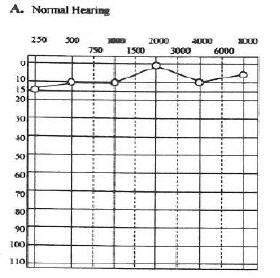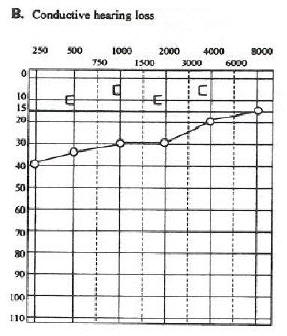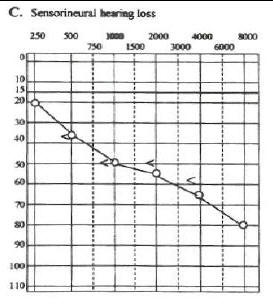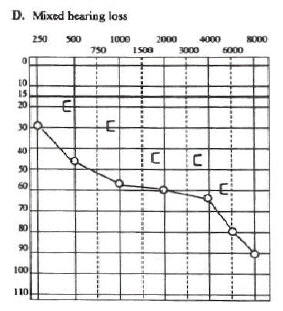
Audiograms
Tympanogram interpretation
This week we will complete the ear evaluation and specifically look at AUDIOGRAMS. They are a very useful tool to determine if a patient has conductive or sensorineural hearing deficit, and to what extent.
The frequency (pitch) is plotted on the x-axis, and the intensity on the y-axis.

Normal hearing is defined as 15dB or better.
The test involves assessing air conduction (o) and bone conduction
Air conduction assesses hearing sensitivity when the signal is transmitted through the outer, middle, and inner ear and then through the brain.
Bone conduction assesses hearing sensitivity when the signal is transmitted through the bones of the skull to the cochlea and through the auditory pathways of the brain.
1) Conductive hearing loss- Nml bone conduction, air conduction poorer than normal by at least 10dB, i.e. otitis media with/without effusion, ear wax

2) Sensorineural hearing loss-
both air and bone conduction poorer than
normal, and within 10dB of each other; secondary to cochlear abnormality
and/or abnormality of auditory nerve or central auditory pathways
i.e. cochlear damage (i.e. noise induced), CN8
damage

3) Mixed hearing loss-
loss of both conductive and
sensorineural components- Pure tone
air conduction thresholds are poorer
than bone conduction thresholds
by more than 10dB and bone conduction thresholds are less
than 25 dB

Get used to and comfortable looking at these- they are loved by the boards.
How is it done?
Play Audiometry
Conventional Audiometry